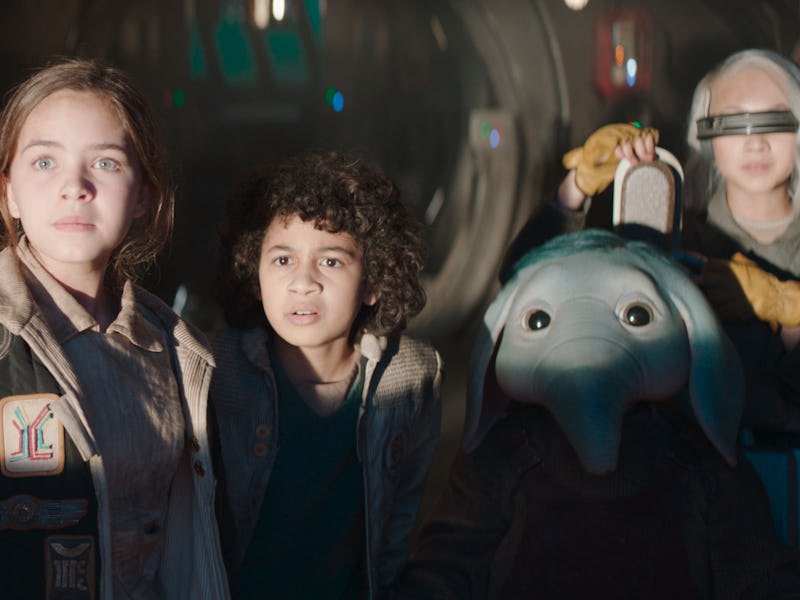Skeleton Crew’s Incredible Effects Are A Callback To A Star Wars Golden Age
Reject modernity, return to tradition.

Star Wars has always been on the cutting edge of special effects. At its core, it is, after all, a space opera, and that means going above and beyond to make the most outrageous scenarios feel realistic. When the Imperial Starcruiser zoomed over the camera in A New Hope, anything seemed possible.
Almost a half-century later, Star Wars is still on the cutting edge, but that isn’t always a good thing. In fact, the latest Star Wars trend seems to be rejecting more advanced technology and using older techniques, even if it means a less seamless image. There’s no better example of this than Skeleton Crew, a show entirely built on nostalgia for the Star Wars of yore, from the story all the way down to the special effects — including a rarely-used technique that once formed the heart of the franchise’s most ambitious shots.
The matte painting of At Attin was painted on Masonite, the same wood pressboard used in the original trilogy.
In a conversation with StarWars.com, visual effects supervisor John Knoll and model supervisor John Goodson discussed creating Skeleton Crew’s intricate special effects, from Neel, the main character requiring an animatronic mask cleaned up with CGI, to the many new monsters and aliens that require all kinds of practical effects, ranging from prosthetics to puppets and stop motion.
“With only about two months left to go, I got an email from director Jon Watts that said, ‘Well, we've done puppets, prosthetics, animatronics, stop motion, and a miniature,” Knoll said. “‘Boy, the one thing we haven't done is a matte painting! Is there any way we could still fit something like that into the show?’” Matte paintings had been used in many classic Star Wars films as a way to force perspective. For example, a matte painting was once used in Return of the Jedi to show an army of stormtroopers in formation without having to use actual actors.
With the help of Caroleen “Jette” Green, who served as a matte painter from previous Lucasfilm projects like Indiana Jones and the Temple of Doom, a matte painting of At Attin’s barrier was created and used throughout the series, especially in Episode 7. “I'm especially pleased with how the shots that incorporate both the miniature and the matte painting turned out. I think they're just gorgeous,” Knoll said.
Skeleton Crew used everything in the special effects bag of tricks, from matte paintings to miniatures.
Modern Star Wars has recently looked back to the past with its special effects. While The Mandalorian pioneered the use of the 360 degree LED wall known as The Volume, the overdependence on this technology has led to criticism of series like Ahsoka. One of the most acclaimed Star Wars series, Andor, eschewed the Volume entirely and filmed on practical sets with post-production CGI.
Skeleton Crew is just taking that trend one step further, showing how old-fashioned techniques can still hold up in the modern Star Wars landscape. The franchise will always remain on the cutting edge, but it’s good to know the old tricks are still in the mix.